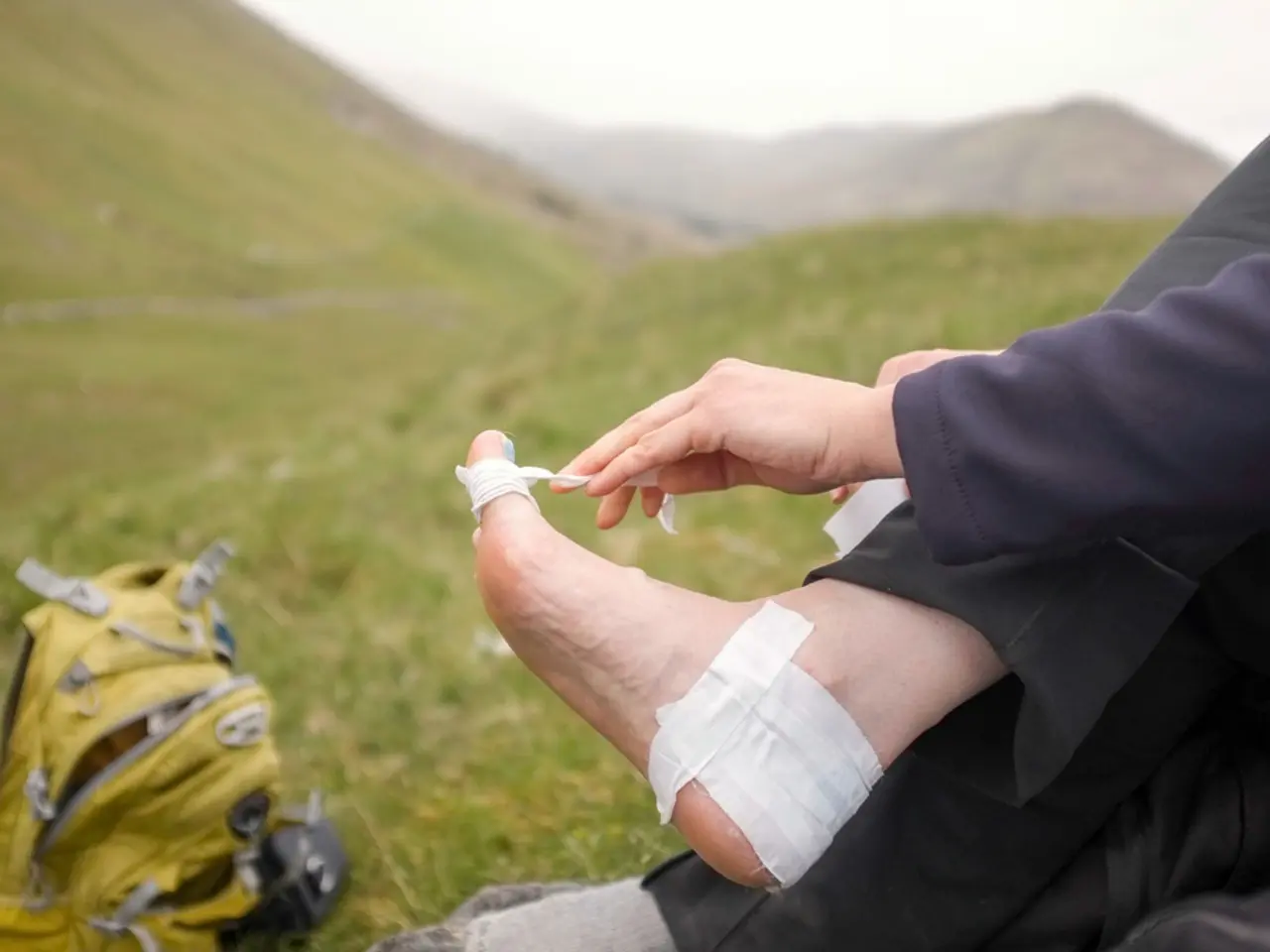The Question at Hand: To Cover or Leave Exposed, Your Injury?
===================================================================
When it comes to wound care, it's essential to know when to cover and when to let a wound breathe. Here are some guidelines to help you make informed decisions about your wound care.
Most wounds benefit from being covered to protect against infection, maintain moisture balance, and promote optimal healing. However, there are exceptions to this rule.
Certain minor abrasions or superficial wounds that are clean and can dry to form a natural scab do not require covering. Pressure ulcers on the heels can often be left open to dry as well.
On the other hand, chronic wounds or ulcers, infected wounds, or those at high risk of infection need sterile bandaging. Burns or surgical wounds usually require specific dressing protocols and should not be left open unless otherwise instructed by healthcare providers.
Airing out most wounds isn't beneficial for the healing process. Drying out new surface cells can increase pain or slow the healing process. Topical antibiotic ointment is often applied to a scrape or small cut and is then covered with gauze or a bandage to prevent infection and maintain a moist environment.
It's important to seek medical advice if a wound is not healing or shows signs of infection. Healthcare professionals will assess the wound and determine the best course of action.
Covering a wound helps keep new skin and other cells alive by maintaining a moist environment. Leaving a wound uncovered may dry out new surface cells, which can delay healing. Covering a wound also protects it from dirt, germs, and further injury.
In some cases, leaving certain types of wounds uncovered does not necessarily harm the healing process. For example, small, dry scabs from minor cuts and scrapes can be left uncovered. However, it's always best to consult with a healthcare professional if you're unsure about the best way to care for your wound.
Dr. Christi Cavaliere, a plastic surgeon, emphasizes the importance of proper wound care. She advises that if a wound looks deep, is not healing, or might be infected, a healthcare professional should examine it.
In conclusion, while most wounds benefit from being covered, there are exceptions to this rule. It's essential to seek medical advice if you're unsure about the best way to care for your wound. Proper wound care can help ensure a speedy and healthy healing process.
- Maintaining a healthy and speedy healing process for various conditions is crucial, and this includes adhering to therapies and treatments in the fields of both science and health-and-wellness, such as fitness-and-exercise and nutrition, in addition to the appropriate use of therapies and treatments in wound care.
- In the realm of health and wellness, nutrition plays a significant role in the healing process, as a balanced diet rich in essential nutrients can aid in the overall recovery from injuries or surgeries, strengthening the immune system and promoting optimal healing.
- In order to prevent further complications and achieve a swift recovery, it's crucial to follow the guidance of healthcare professionals regarding your specific condition and wound care, as they can provide you with the most effective fitness-and-exercise regimens, nutrition recommendations, and therapies-and-treatments to support your health.




